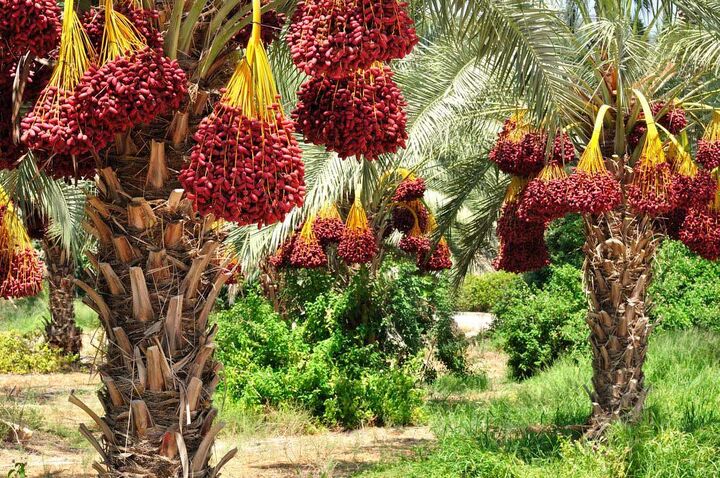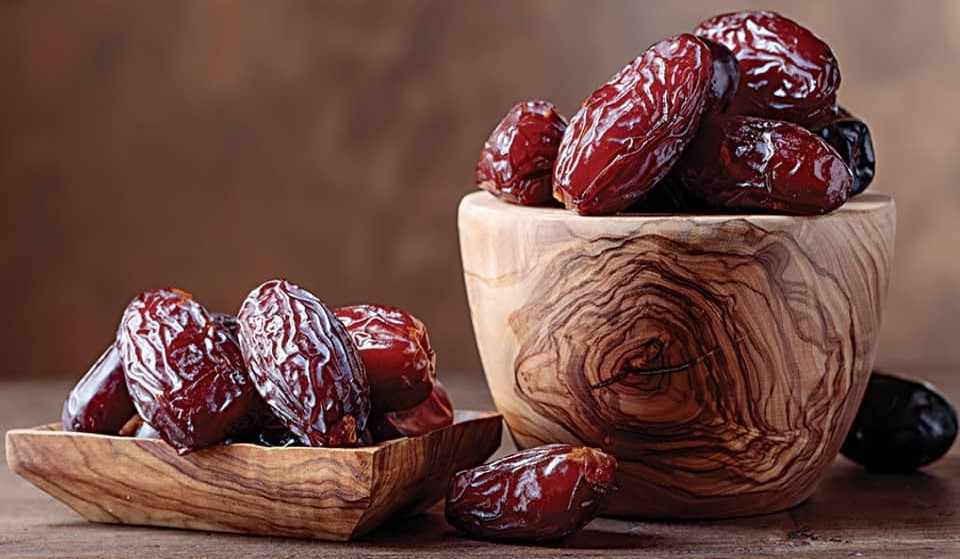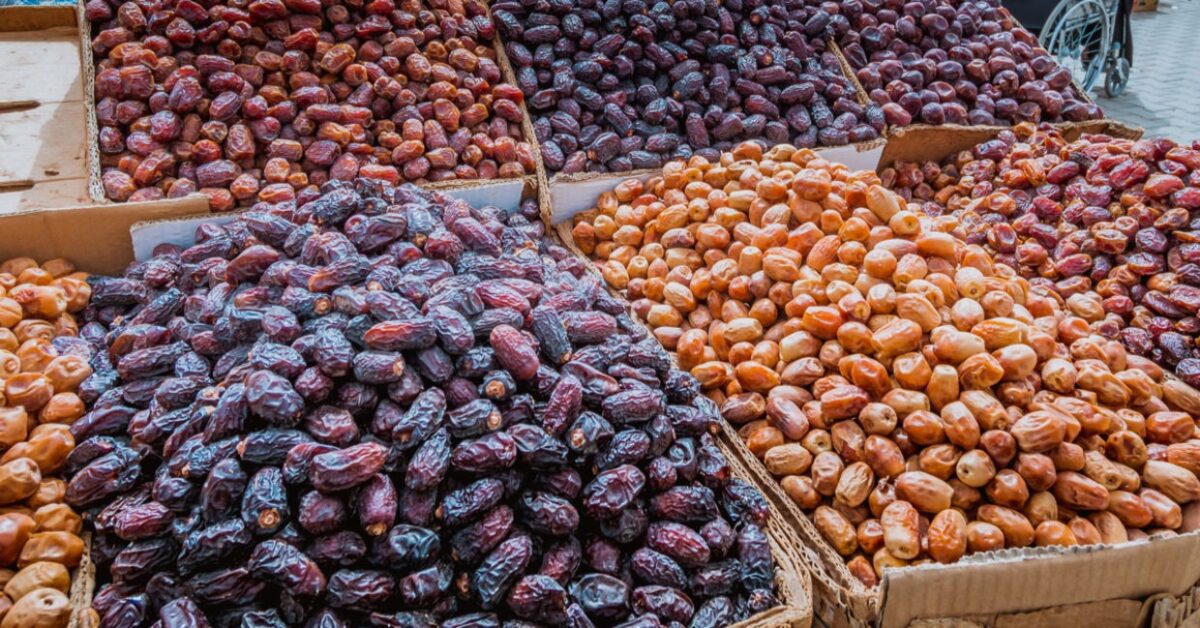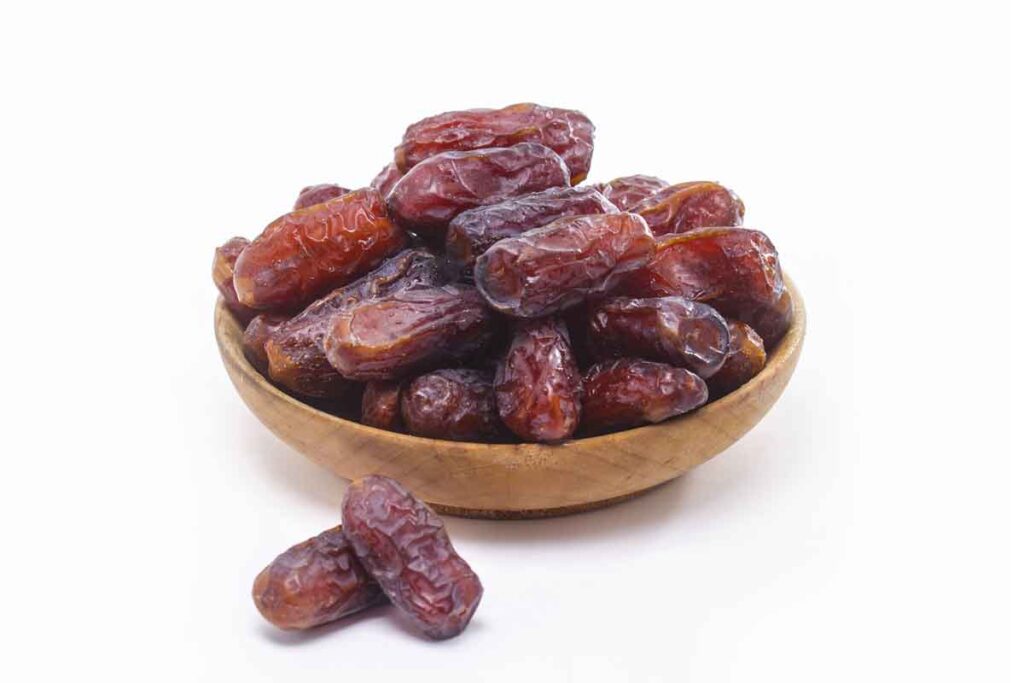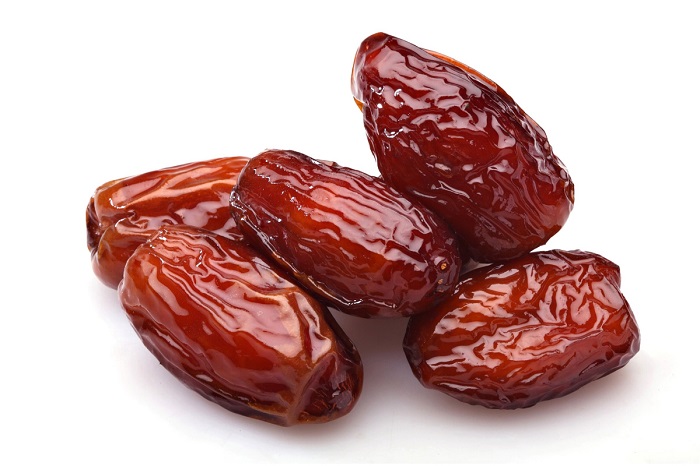Beyond their inherent sweetness, Iranian dates hold a fascinating story within their wrinkled skins. Let’s delve deeper into the unique aspects that set them apart and explore the landscape of their global competitors.
A Tapestry of Flavors:
- Beyond Mazafati: While the popular Mazafati, with its soft flesh and intense caramel notes, is well-known, Iran offers a captivating array of lesser-known gems. The Piarom, often dubbed the “king of dates”, boasts a luxurious, honeyed flavor and a slender, elegant form. Then there’s the Sayer, a semi-dry delight with a rich, syrupy texture and high sugar content, perfect for energy boosts. Don’t forget the Shahani, known for its chewy texture and distinct chocolatey undertones. Each variety unfolds a unique flavor profile, waiting to be discovered.
- Ancient Techniques, Modern Twists: Traditional cultivation methods, honed over centuries, play a crucial role in shaping the characteristics of Iranian dates. Farmers employ techniques like hand pollination and natural ripening, ensuring optimal quality and minimal environmental impact. However, modern innovations are also embraced. Researchers explore advancements in drip irrigation and disease control, aiming to boost yields while preserving the traditional essence.
- A Nutritional Powerhouse: Iranian dates go beyond mere indulgence. They’re packed with essential vitamins, minerals, and dietary fiber, making them a natural source of energy and vital nutrients. The Zahidi variety, for example, is rich in potassium and magnesium, crucial for muscle function and nerve health. The Kabkab, revered in traditional Persian medicine, boasts anti-inflammatory properties. Iranian dates offer a delicious way to nourish your body alongside your taste buds.
Navigating the Sweet Battlefield:
Iran’s date industry faces a dynamic global landscape filled with worthy competitors:
- North African Giants: Egypt, Tunisia, and Algeria are powerhouses, offering large, commercially popular varieties like the Medjool and Deglet Noor. These dates often appeal to consumers seeking larger sizes and familiar sweetness.
- Persian Gulf Rivals: Saudi Arabia and the United Arab Emirates have emerged as significant players, cultivating diverse varieties like the Khalas and Khenaizi. They leverage their geographical proximity to major markets and invest heavily in modern farming techniques.
- New Entrants: Emerging producers like Pakistan and Sudan are rapidly increasing their date production, adding to the already competitive market. They often offer competitive prices, making them attractive to budget-conscious consumers.
Sweet Victories Ahead:
Despite the competition, Iran has several trump cards:
- Unique Varietal Portfolio: The sheer diversity of Iranian dates, unmatched by any other producer, allows them to cater to specific tastes and preferences.
- Rich Cultural Heritage: The cultural significance of dates in Iran translates into meticulous care and attention to detail throughout the production process, ensuring premium quality.
- Focus on Sustainability: Many Iranian farmers prioritize eco-friendly practices, attracting consumers increasingly concerned about responsible sourcing.
The Future of Sweet Success:
To stay ahead in the global arena, Iran can further solidify its position by:
- Embracing Innovation: Investing in research and development to enhance yields, improve disease resistance, and explore value-added products like date-based snacks and cosmetics.
- Engaging in Strategic Marketing: Highlighting the unique qualities of each variety, showcasing the rich cultural heritage behind them, and targeting specific consumer segments.
- Building Strong Partnerships: Collaborating with international stakeholders to ensure fair trade practices, improve market access, and promote sustainable production methods.
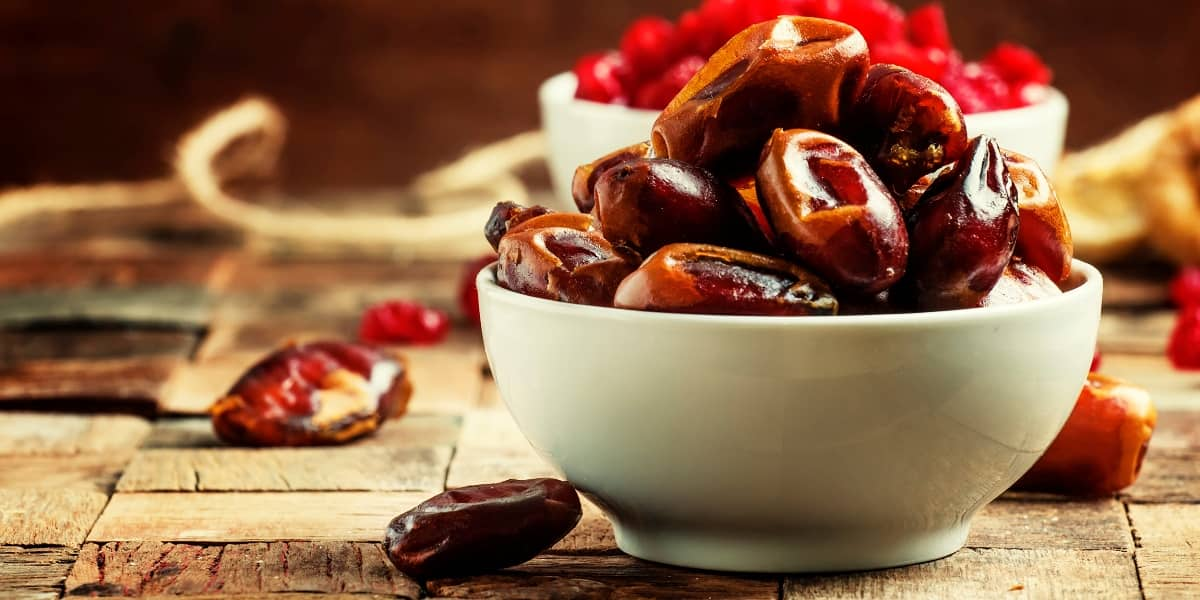
A World of Delicious Possibilities:
Each Iranian date variety boasts unique characteristics and ideal use cases that make them stand out:
- Mazafati: Its soft flesh and intense caramel notes make it a favorite for fresh consumption. Its rich sweetness also shines in desserts like date cakes and puddings.
- Piarom: The “king of dates” is perfect for gourmet gifting and luxury snacking. Its honeyed flavor elevates cheese platters and adds a touch of elegance to salads.
- Sayer: This semi-dry gem is ideal for energy bites and trail mixes due to its chewy texture and high sugar content. It also works wonders in baked goods like cookies and muffins.
- Shahani: Its chocolatey undertones make it a unique treat for snacking and a surprising addition to savory dishes, like stews and tagines.
- Zahidi: Packed with potassium and magnesium, it’s a healthy choice for smoothies and energy bars. Its mild sweetness makes it versatile for savory applications like stuffings and chutneys.
- Kabkab: Revered for its medicinal properties, it’s enjoyed for its unique flavor and used in traditional remedies.
Exporting Sweet Success:
The “best” choice for exporting depends on several factors, including:
- Target Market: Different regions have varied preferences. Mazafati and Piarom might appeal to high-end markets seeking luxury, while Sayer and Zahidi could cater to health-conscious consumers.
- Logistics & Shelf Life: Varieties like Mazafati and Sayer with shorter shelf lives might be better suited for regional exports, while Piarom and Zahidi, with longer shelf lives, could handle longer journeys.
- Price Point: Shahani and Zahidi, with slightly lower production costs, might be attractive for budget-conscious markets, while Piarom and Mazafati could command premium prices.
Beyond the Single Fruit:
Expanding export potential goes beyond individual varieties. Exploring value-added products like:
- Date syrups: Concentrated sweetness for baking, sauces, and beverages.
- Date pastes: A versatile ingredient for spreads, energy bars, and desserts.
- Date snacks: Coated in chocolate, nuts, or seeds for convenient, healthy treats.
By leveraging its unique strengths and embracing strategic advancements, Iran can ensure its dates continue to delight palates and conquer hearts across the globe. The future of the sweet Persian jewels remains as bright and enticing as their sun-kissed skins.

